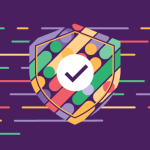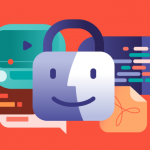
Data Loss Prevention (DLP) has quickly evolved from being just another technical jargon to an imperative in the cybersecurity lexicon. As the world grapples with a rising tide of cyber threats, from subtle insider threats to blatant cyber attacks, the need for a robust DLP solution, such as Endpoint Protector by CoSoSys is felt across sectors, roles, and organizations. Whether you’re a network admin concerned about vulnerabilities or a CISO devising strategic corporate defense plans, understanding DLP and its best practices is pivotal.
The Pillars of Data Loss Prevention Strategy
- Identification: Recognizing and classifying sensitive data is the cornerstone of any DLP strategy. It’s not just about securing data, but understanding its nature. Is it subject to regulations like GDPR or HIPAA? Is it PII that, if leaked, could spell disaster for stakeholders? Knowing your data helps in formulating effective protection measures.
- Protection: Once you’ve identified your critical data, the next step is fortifying your defenses. This involves safeguarding data, both at rest and in transit. Tools like data encryption play a pivotal role here. Furthermore, implementing rigorous access controls and permissions ensures that only authorized personnel can access sensitive information.
- Detection: A static defense isn’t enough. With cyber threats evolving constantly, proactive monitoring and tracking of data flows are essential. Real-time DLP tools come into play here, continuously surveilling data movements, and flagging any suspicious activity or potential data breaches.
- Response: Even the most fortified castle can have a breach. The key lies in swift action. A robust DLP strategy is always accompanied by an incident response mechanism that can act promptly upon potential data leakages or unauthorized access incidents. It’s about having a plan, should the unexpected occur, and mitigating damages efficiently.
Best Practices for Robust Data Loss Prevention
While a DLP policy acts as your foundation, the effectiveness of your data protection strategy hinges on following some universally acknowledged best practices. These aren’t just checkboxes to mark, but philosophies to internalize and implement. Let’s dive into these proven practices:
- Continuous Data Classification: Data isn’t static. As your organization grows and evolves, so does its data. Periodic data classification ensures that new types of sensitive data are promptly identified and safeguarded.
- Limit Data Access: The principle of least privilege (PoLP) suggests that users should only have access to the information they need to perform their tasks. This minimizes the risk of unauthorized access and potential breaches.
- Implement Multi-factor Authentication (MFA): A password isn’t enough. Layering your security with multi-factor authentication can significantly deter unauthorized access attempts. This is particularly crucial for accessing sensitive information and critical systems.
- Regularly Update DLP Solutions: The world of cybersecurity is in perpetual motion. As new threats emerge, DLP solutions are updated to combat them. Regularly updating your DLP tools ensures you’re always a step ahead of potential hackers and cyber threats.
- Reduce False Positives: While DLP tools monitoring for suspicious activity are great, an overflow of false positives can be counter-productive. Tweaking and refining your DLP solutions to reduce false alarms can help in focusing on genuine threats.
- Incident Response Plan: Having a well-defined incident response plan ensures swift action in case of potential breaches. Time is of the essence, and a clear, pre-established protocol can make all the difference.
- Stay Updated with Compliance Requirements: Regulations like GDPR, HIPAA, and PCI DSS are in place to protect sensitive information. Ensure your DLP practices are always in line with these regulations to avoid legal repercussions.
- Engage All Stakeholders: DLP isn’t just an IT department’s responsibility. From the top brass of an organization to its frontline employees, everyone plays a role. Regular discussions, training, and awareness sessions can embed DLP practices in the organization’s ethos.
- Monitor Off-network Endpoints: In today’s mobile world, data is accessed from a plethora of devices and locations. Ensure your DLP practices cover off-network endpoints, such as remote workstations and mobile devices.
- Regular Backups: While prevention is paramount, being prepared for the worst-case scenario is wise. Regularly back up critical data to ensure its recovery in case of any unforeseen data loss incidents.
Remember, DLP is a journey, not a destination. It requires consistent effort, vigilance, and evolution. As threats become more sophisticated, so should your prevention measures.
Real-world Failures and Lessons Learned
DLP isn’t just a theoretical concept. It has real-world implications, and sometimes, a lapse in DLP measures can lead to significant repercussions. By analyzing real-world incidents, we can glean insights and understand the importance of robust DLP strategies. Let’s delve into a couple of examples:
1. The Case of the Exposed Intellectual Property
Scenario: A leading tech company faced a significant breach when its IP – the blueprints for an upcoming product – were leaked online. The leak came from an insider threat: an employee who had access to this critical information.
Lesson Learned: Access controls need regular reviews. Just because an employee has no malicious intent at the onset doesn’t mean their intentions won’t change. Regular audits, combined with stringent access controls and timely permission revocations, can mitigate such risks.
2. The Unintended Cloud Misconfiguration
Scenario: A healthcare provider stored patient data in the cloud. Due to a misconfiguration in their cloud storage permissions, confidential patient data, including PII, medical histories, and financial details, became publicly accessible.
Lesson Learned: Cloud storage, while convenient, can be a double-edged sword. It’s imperative to understand the intricacies of cloud configurations, permissions, and access controls. Regular checks and employing professionals with cloud-specific knowledge can prevent such accidental exposures.
3. Malware Strikes a Financial Institution
Scenario: A well-known bank fell victim to malware, which infiltrated its systems via a seemingly harmless email attachment. This malware silently siphoned off financial data and transaction details of thousands of customers.
Lesson Learned: Real-time monitoring and a robust cybersecurity framework are non-negotiable. Training employees to recognize potential phishing attempts and having DLP tools that can detect and mitigate threats in real time are paramount.
4. Unencrypted Data on the Move
Scenario: An executive of a multinational corporation lost his laptop during travel. While the loss of hardware was concerning, the real threat was the unencrypted sensitive data stored on the device, which could easily fall into the wrong hands.
Lesson Learned: Data encryption, especially for mobile devices and laptops, is crucial. Devices can be lost or stolen, but encrypted data remains a jumbled mess for anyone without the correct decryption key.
In all these cases, there was a common thread: prevention could have mitigated the risks. By understanding potential vulnerabilities and implementing robust DLP measures, companies can avoid becoming cautionary tales.
Why DLP and Cybersecurity Go Hand in Hand
DLP is not an isolated island in the vast ocean of data security. Instead, it’s closely interwoven with the larger cybersecurity landscape. As cyber threats evolve and become more sophisticated, the boundaries between DLP and general cybersecurity measures blur. Here’s why they’re two sides of the same coin:
1. Common Goal: At their core, both DLP and cybersecurity aim to protect sensitive data from unauthorized access, breaches, and leaks. Whether it’s preventing data leakage or protecting against cyber attacks, the end goal is safeguarding the organization’s sensitive information.
2. Overlapping Tools: Many DLP tools offer functionality that extends beyond just data loss prevention. They incorporate features that protect against malware, monitor suspicious activity, and even offer real-time threat mitigation – all essential cybersecurity measures.
3. The Insider Threat Dimension: One of the most significant cybersecurity threats comes from disgruntled employees, careless actions, or even innocent mistakes. DLP specifically addresses the insider threat by monitoring and controlling data access, which is a crucial cybersecurity component.
4. Regulatory Compliance: Laws like GDPR, HIPAA, and PCI DSS have both cybersecurity and DLP components. Organizations must ensure that their data security measures align with DLP strategies to meet regulatory compliance fully.
5. Addressing the Human Factor: No matter how robust an organization’s cybersecurity infrastructure might be, human error remains a potential vulnerability. DLP’s focus on training, awareness, and creating a culture of data-consciousness addresses this human element, enhancing the overall cybersecurity posture.
6. Shared Stakeholders: It’s not just the IT or the security team that’s responsible for both DLP and cybersecurity. Stakeholders across the organization, from top management to frontline staff, play a role in ensuring a comprehensive data security strategy.
In essence, to have a robust cybersecurity posture, organizations can’t ignore the critical role DLP plays. Conversely, a strong DLP strategy benefits immensely from an overarching cybersecurity framework. The two are intertwined, each enhancing the other, ensuring the organization’s data remains safe and secure.
Implementing DLP: A Step-by-Step Guide
Embarking on a journey to implement a robust DLP strategy might seem daunting. However, with a systematic approach and a clear roadmap, organizations can navigate this path efficiently. Here’s a step-by-step guide to building a successful DLP program:
1. Data Classification: Before you can protect your data, you need to understand it.
Action: Inventory all data sources across the organization. Categorize data based on sensitivity levels (e.g., public, confidential, critical).
Tools: Use automated data classification tools to identify and tag data based on predefined criteria.
2. Define DLP Policies: Set clear guidelines on how different data types should be handled.
Action: Develop policies that stipulate who can access which data, how it can be shared, and when it can be transmitted.
Template: Consider starting with a data loss prevention policy template and tailor it to your organization’s needs.
3. Choose the Right DLP Tools: Not all DLP solutions are created equal.
Action: Evaluate DLP solutions based on your organization’s size, industry, regulatory needs, and specific data protection requirements.
Considerations: Think about factors like on-premise vs. cloud, real-time monitoring capabilities, and integration with other cybersecurity tools.
4. Educate & Train Employees: A DLP program is only as good as the people implementing it.
Action: Regularly train employees on the importance of DLP, how to recognize potential threats, and best practices for data security.
Tip: Use real-world examples to highlight potential risks and consequences of data breaches.
5. Monitor & Adjust: DLP is not a set-it-and-forget-it solution.
Action: Regularly monitor data access patterns, looking for suspicious activity or policy violations. Adjust policies and tools as needed based on real-world performance and emerging threats.
Functionality: Leverage DLP tools’ functionalities that provide analytics and insights into data flow within the organization.
6. Review & Audit: Ensure compliance and effectiveness.
Action: Periodically review your DLP program’s effectiveness. Conduct audits to ensure compliance with internal policies and external regulations.
Best Practice: Engage third-party experts for unbiased audits and recommendations.
7. Plan for Incident Response: Even with the best measures in place, incidents can occur.
Action: Develop a robust incident response plan to address potential data leaks or breaches. This plan should detail steps for containment, remediation, communication, and recovery.
Quick Tip: Regularly test and update your incident response plan. Real-time drills can ensure preparedness.
Implementing DLP requires commitment, resources, and consistent effort. However, with the right approach and continuous improvement, organizations can significantly reduce their risk of data loss and enhance their overall data security posture.
Why Choose Endpoint Protector?
In the fast-evolving landscape of data security, it’s crucial to have a partner that understands the complexities and nuances of today’s challenges. Endpoint Protector stands at the forefront of DLP solutions, offering cutting-edge tools tailored to the unique needs of modern businesses.
Our comprehensive DLP solution ensures that your sensitive data remains protected, no matter where it resides. From cloud storage and apps to endpoint devices, we’ve got you covered. And, it’s not just about the tools including Device Control and Enforced Encryption – our dedicated team of information security experts is always on hand to guide, support, and advise, ensuring that you’re not just protected, but also ahead of the curve.
Discover the Endpoint Protector difference. Protect your data and empower your business.
Frequently Asked Questions
Successfully implementing DLP involves:
1. Identifying and classifying different types of data and sensitive information.
2. Crafting a tailored DLP policy based on the organization's unique needs.
3. Choosing the right DLP tools and solutions.
4. Training employees and stakeholders about their roles in data security.
5. Regularly reviewing and refining the DLP strategy to stay ahead of potential threats.
Download our free ebook on
Data Loss Prevention Best Practices
Helping IT Managers, IT Administrators and data security staff understand the concept and purpose of DLP and how to easily implement it.
















